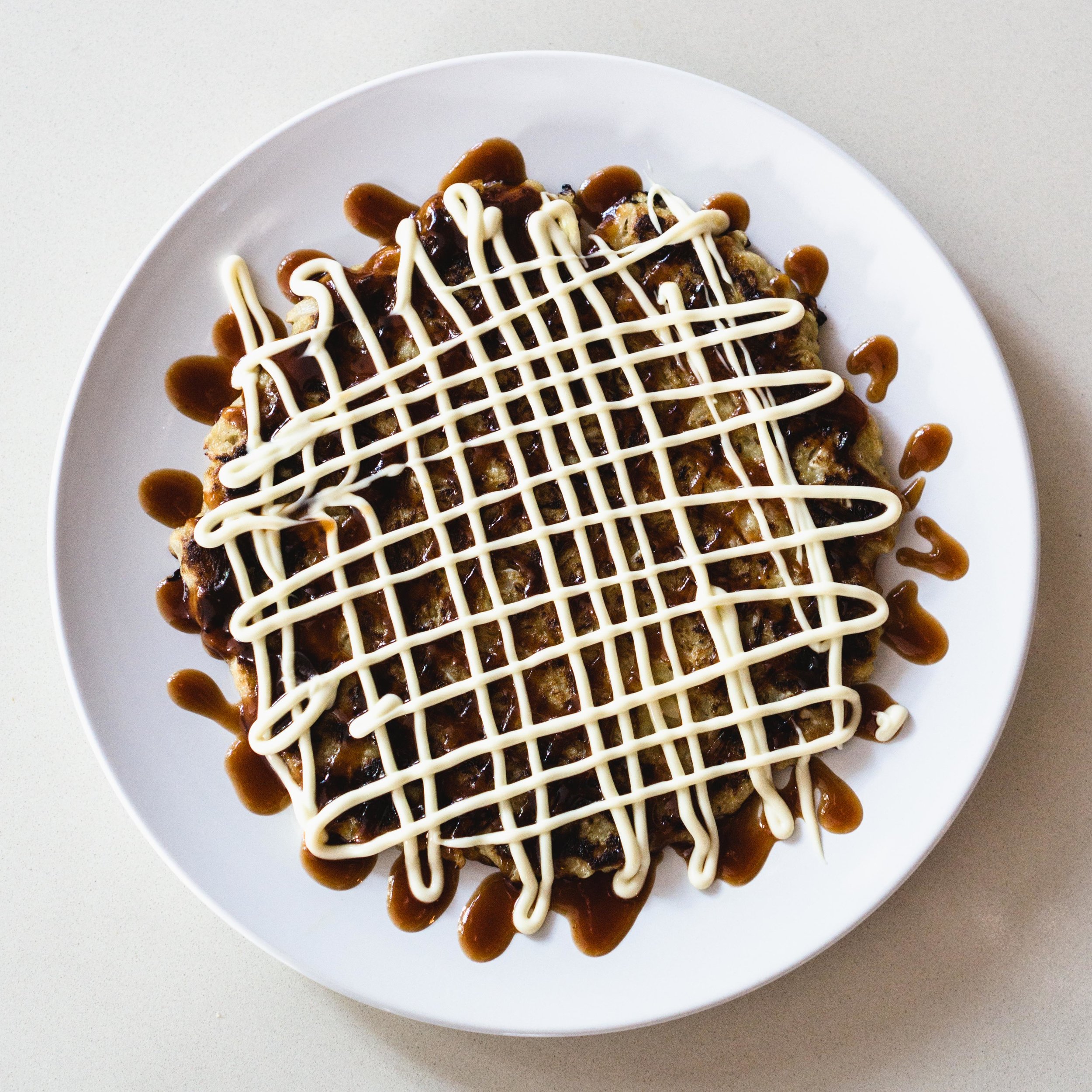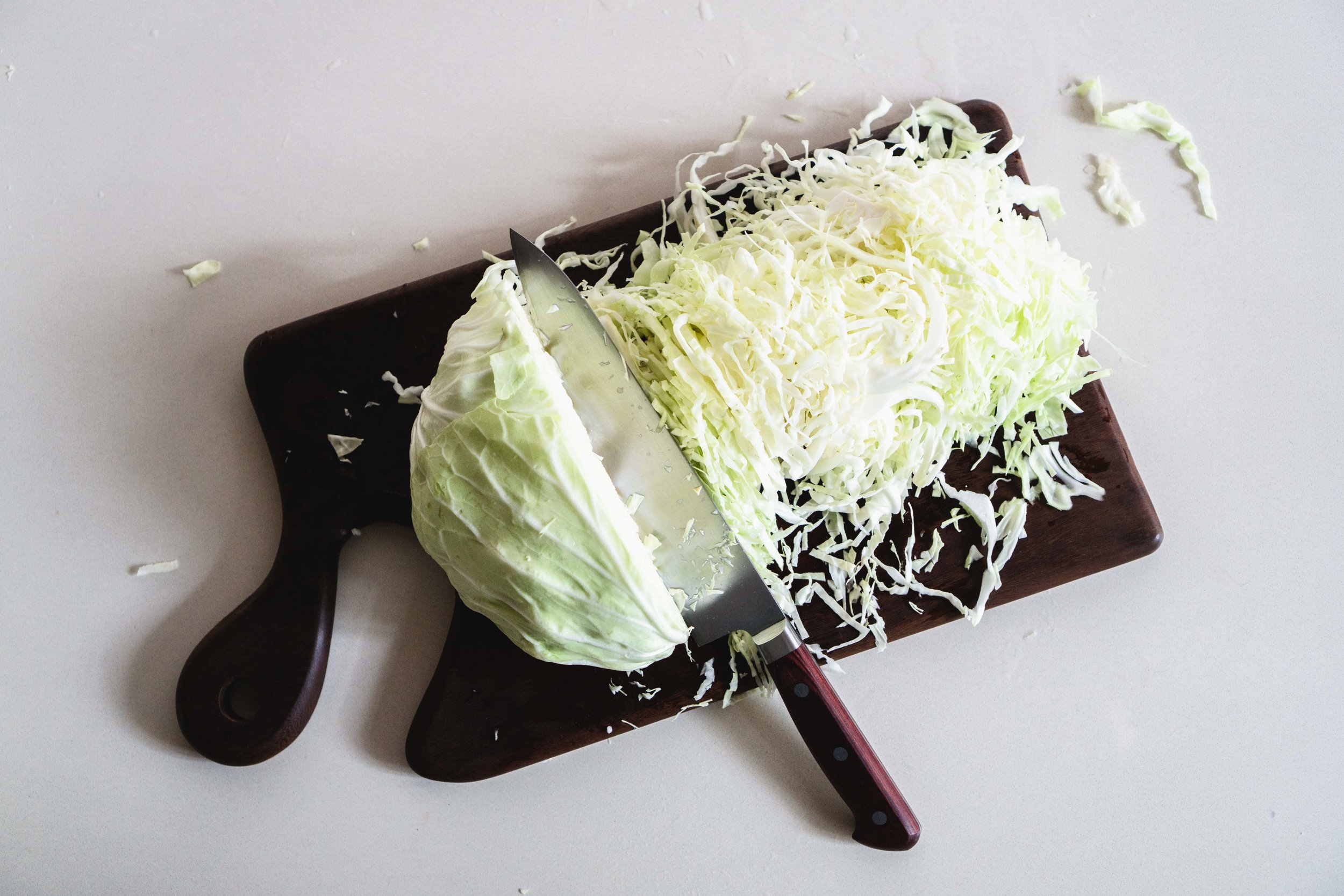German Okonomiyaki
Okonomiyaki is one of the first Japanese dishes that I was exposed to as a kid, not least because it was one of the first Japanese dishes that mom decided to try out when we were kids. (We being me and my siblings.) It was an instant household favourite for us then, probably because mom, being the genius she is, let us decorate our cabbage pancakes to our heart’s content, and in doing so, she cut down on the prep she herself had to do! (I always end up with way too much mayo on my okonomiyakis in my efforts of sketching out the Mona Lisa.) But well played mom, well played.
Now that her kids have grown up though (only in appearance, really), okonomiyaki dinners have become something of a rarity. But since I now know a tad more about food and cooking, I thought it’d be nice to bring this little family tradition back! Only, to appease the crazy cook in me, I took some liberty in changing up the recipe.
So no, these aren’t your classic Japanese okonomiyakis. Because instead of using raw cabbage to form the base of the pancake batter, I used sauerkraut!
This might seem all kinds of odd at first, but if you’ve ever heard of Samin Nosrat’s tried-and-true philosophy of creating spectacular dishes – by having a good balance of salt, fat, acid, and the proper application of heat – you’ll probably have an inkling that this dish could work very nicely!
Sure, for classic okonomiyakis, there’s already a good base of savouriness from the soy sauce and bonito flakes, a good slathering of fat from the mayo, a slight tang from the Worcestershire-heavy okonomiyaki sauce, and a nice contrast of outer char and inner mushiness in the pancakes after a proper fry in the pan.
But as those who have read Samin’s book – Salt, Fat, Acid, Heat – will know, out of the four, acid is often the one that is the most underappreciated/misunderstood. Oftentimes when a dish tastes bland or one-dimensional, all it really needs is a pop of vinegar or a squeeze of lemon to bring the whole dish to life. Especially to an acid fiend like me (I can drink lemon juice neat without batting an eyelid), amping up the acidity in a dish is rarely, if ever, a bad idea. And in the case of okonomiyakis, what better way to introduce some acid than through the main ingredient itself - cabbage! So sauerkraut was a natural choice, as not only does it bring a nice tang to the dish, it also adds a whole dimension of fermented funkiness, which I’m always game for.
The result was really quite something. If you could liken okonomiyakis to Yayoi Kusama exhibits – crazy chaotic, LSD-inducing works of art that tantalises the senses, this kraut okonomiyaki is like if Yayoi Kusama and Rammstein had a rebellious child that went on to make Du Hast-inspired art – funky, punchy, and almost aggressive in its flavour, but with plenty of heart and deep, Japanese synergistic meaning behind it. Make of that what you will. 😂
- - -
Kraut Okonomiyaki
Serves 4
Ingredients
Sauerkraut
1 large cabbage
roughly 1 tablespoon (15g) salt, 2% the weight of the cabbage
1 teaspoon caraway seeds, toasted
Okonomiyaki
100g all-purpose flour
½ teaspoon (3g) salt
1 teaspoon (5g) sugar
½ teaspoon (3g) baking powder
2 eggs
2-inch Chinese yam (nagaimo), grated into a paste, optional
100ml dashi stock, made by simmering kombu and bonito flakes in water for 30 minutes
500g sauerkraut, from above
4 tablespoons vegetable oil, for frying
Okonomiyaki sauce (feel free to buy the ready-made ones)
50g ketchup
35g Worcestershire sauce
20g oyster sauce
20g fine light brown sugar
Rest of the toppings
Japanese mayonnaise
dried bonito flakes (katsuobushi)
dried seaweed, ideally in thin slices but flakes is fine too
1 stalk spring onion, sliced thinly
Directions
Kraut: Quarter the cabbage, discard the core, and then slice it up thinly. Weigh the sliced cabbage, and measure out salt so that it is 2% of the weight of the cabbage. Transfer the cabbage to a bowl, and sprinkle the salt and toasted caraway seeds over the cabbage, and then squeeze and massage the cabbage for 3-5 minutes until it starts to release its juices. Let the cabbage sit in its juices for 20-30 minutes, then massage it a little more before transferring it into a mason jar or container, tamping it down so the cabbage is submerged in its liquid. (You can add a few tablespoons of water to it if it doesn’t quite submerge.) Then, secure a cheesecloth or paper towel over the jar or container, and leave it out at room temperature to ferment for at least a week before refrigerating it in an airtight container. (Some people let it ferment for several weeks, but I like the fresher krauts!)
Okonomiyaki batter: Mix the flour, salt, sugar, and baking powder together. Then, add in the eggs, grated nagaimo, and dashi stock (make sure this isn’t too hot as it’ll scramble the eggs) and whisk until no lumps remain. Finally, add in the sauerkraut and stir until well combined. Let it sit in the refrigerator until you’re ready to fry them up.
Prep toppings: Meanwhile, prepare all the okonomiyaki toppings. To make the okonomiyaki sauce, just mix the ketchup, Worcestershire sauce, oyster sauce, and brown sugar in a bowl until a smooth sauce forms.
Cook okonomiyaki: Add a bit of vegetable oil to a non-stick pan, and heat the pan over a medium flame. Then, add in a ladle-full of the okonomiyaki batter, and spread it out until it’s roughly ½ an inch thick. Let it cook for 2 minutes on one side, or until nicely browned, then flip it over and let the other side fry for another 2 minutes. When done, remove it from the pan and transfer it onto a plate.
Toppings: Drizzle the okonomiyaki sauce and Japanese mayo onto the okonomiyaki. (Use squeeze bottles to help you get that classic okonomiyaki cross-hatch pattern.) Then top it with lots of katsuobushi, dried seaweed, and sliced spring onion, and feast away!









